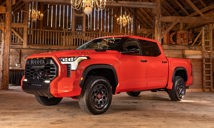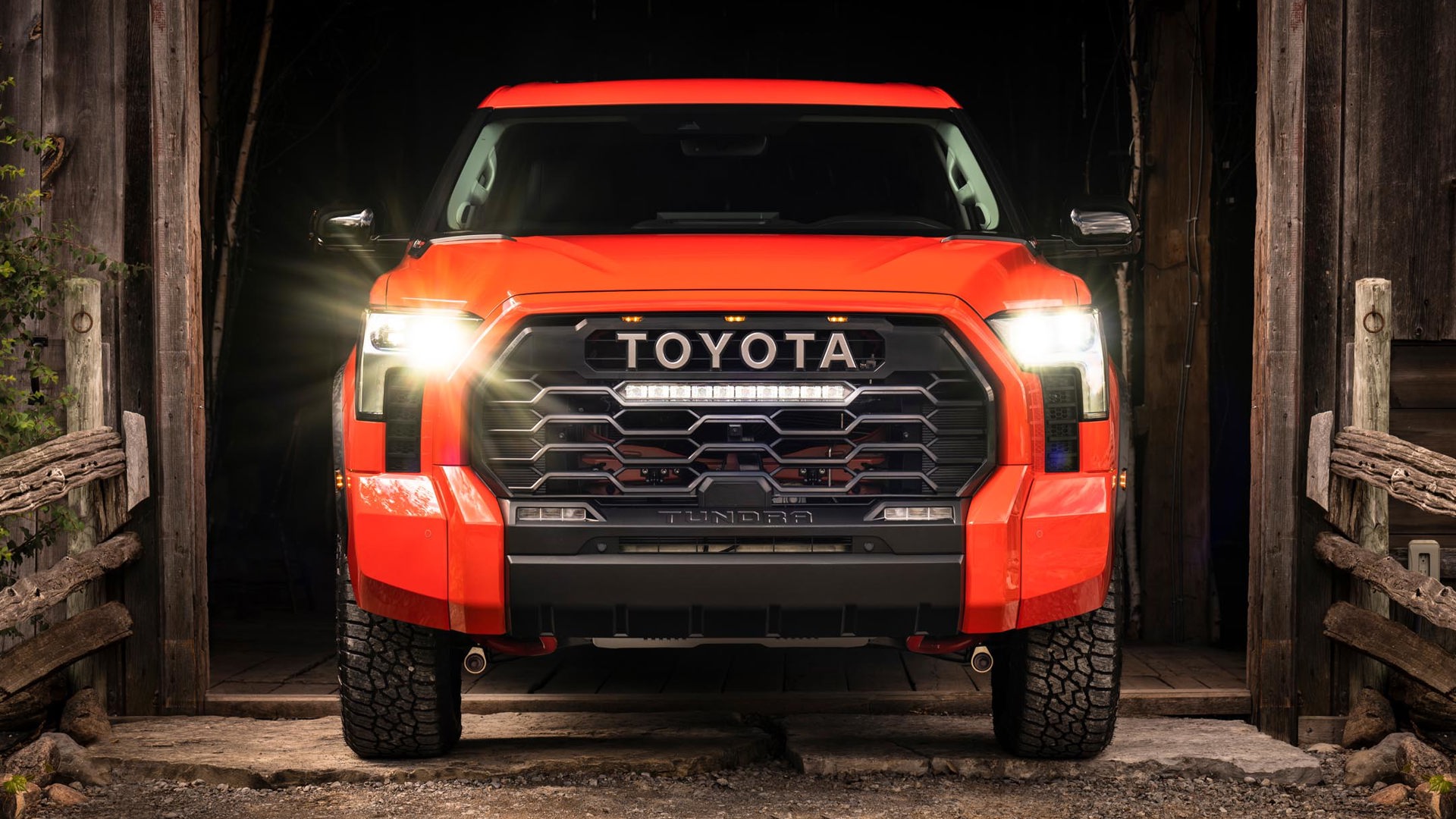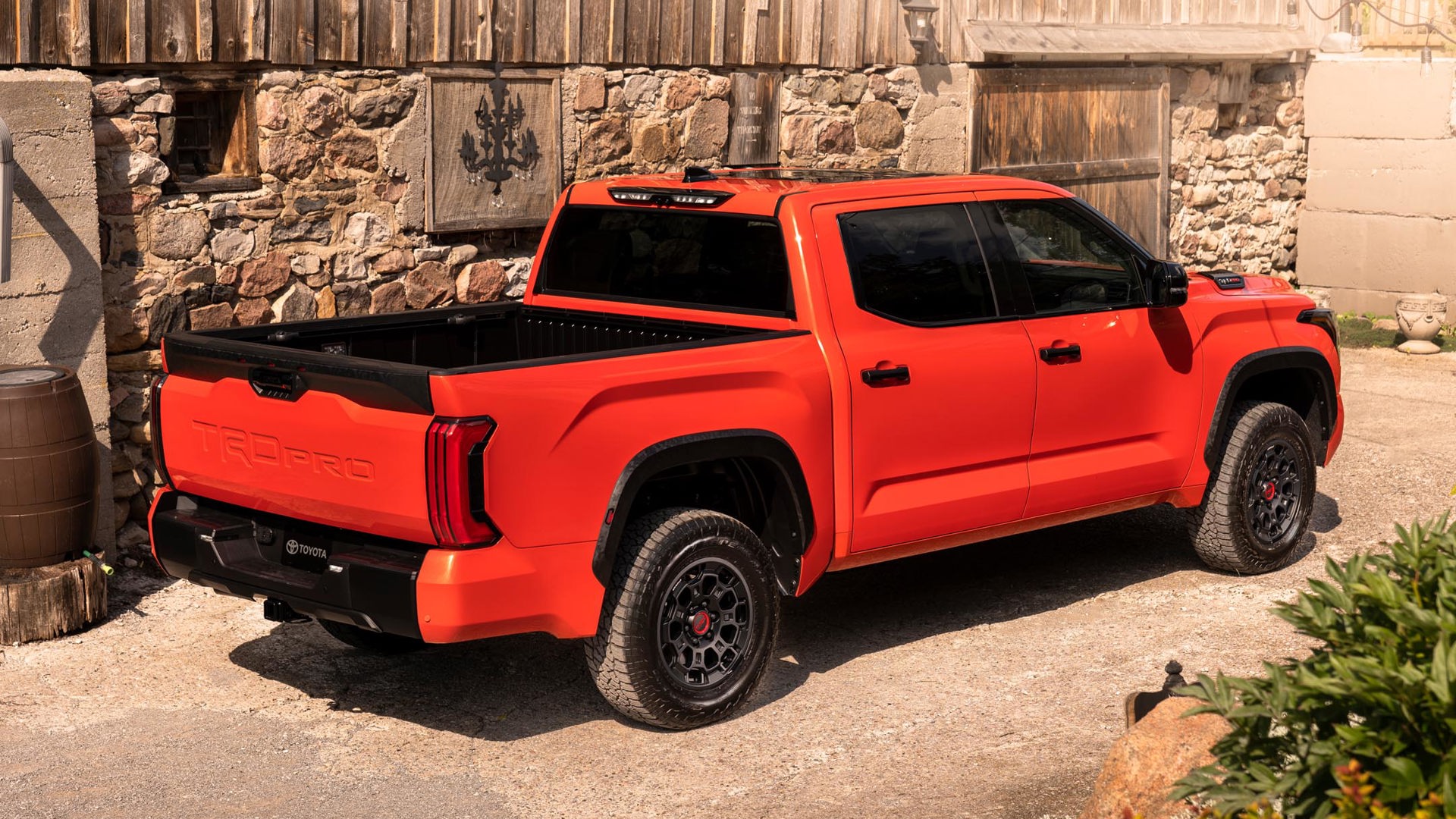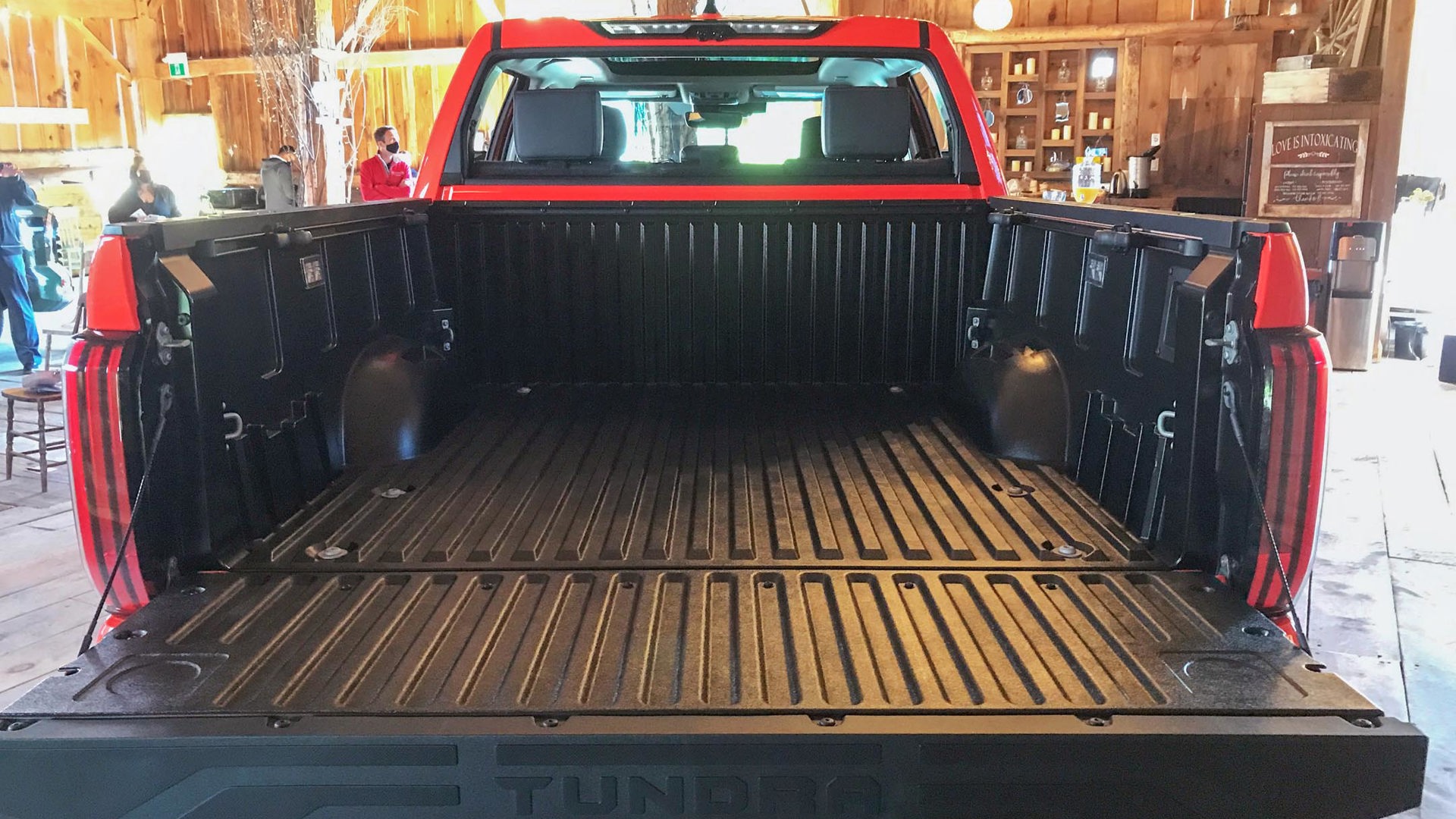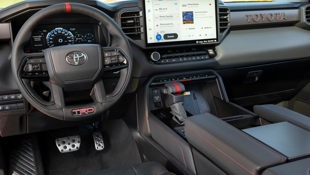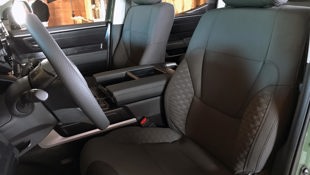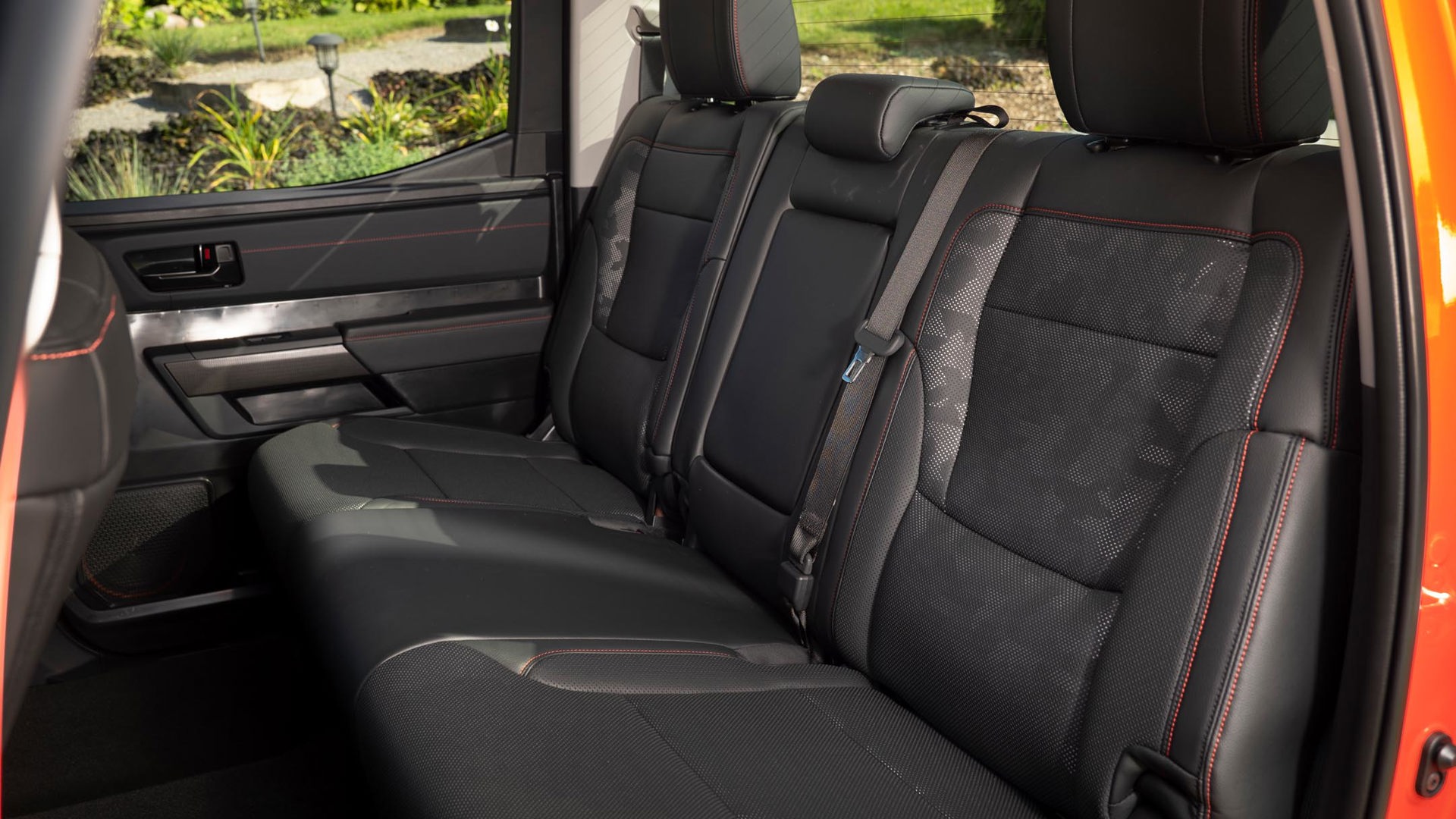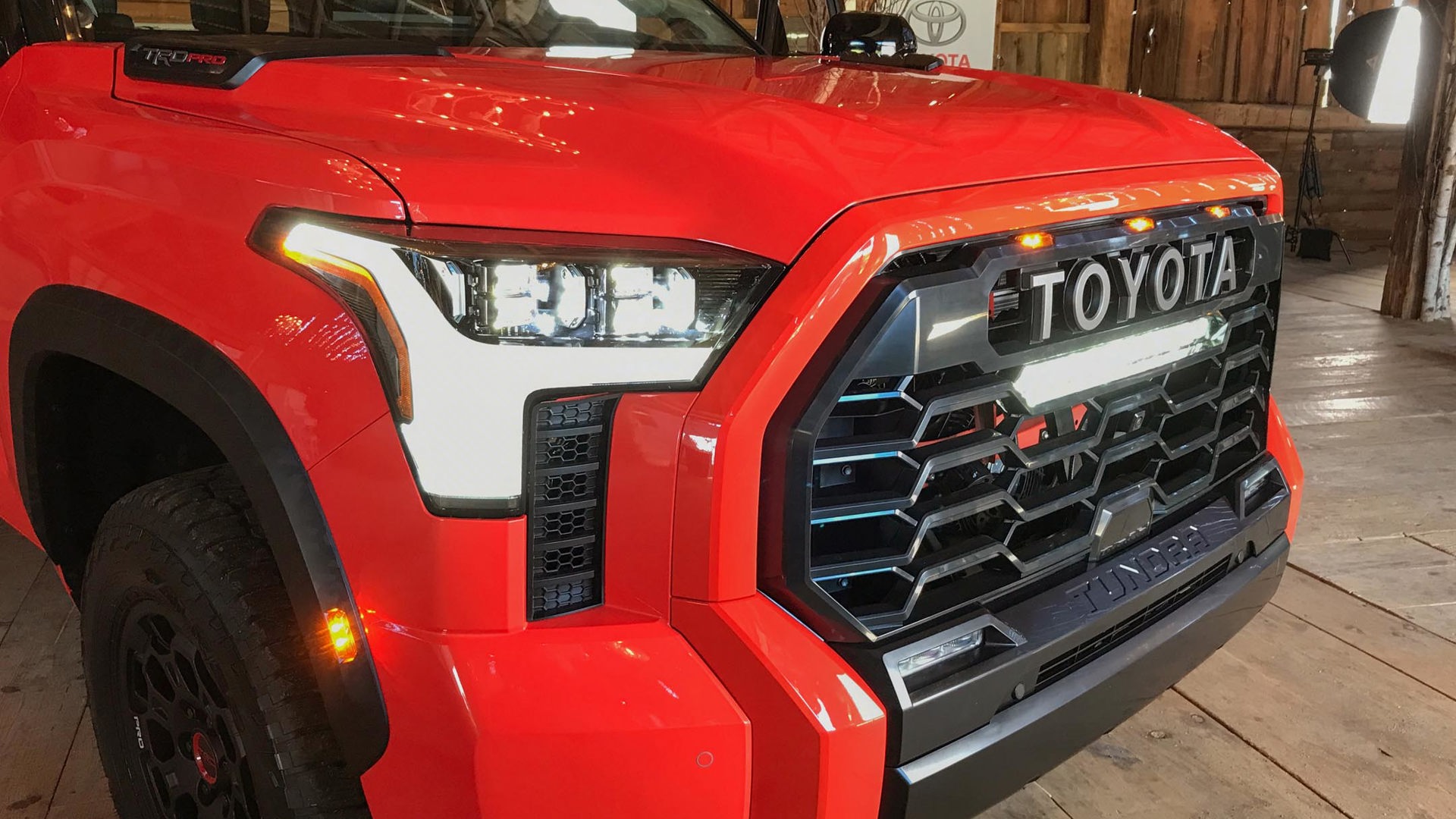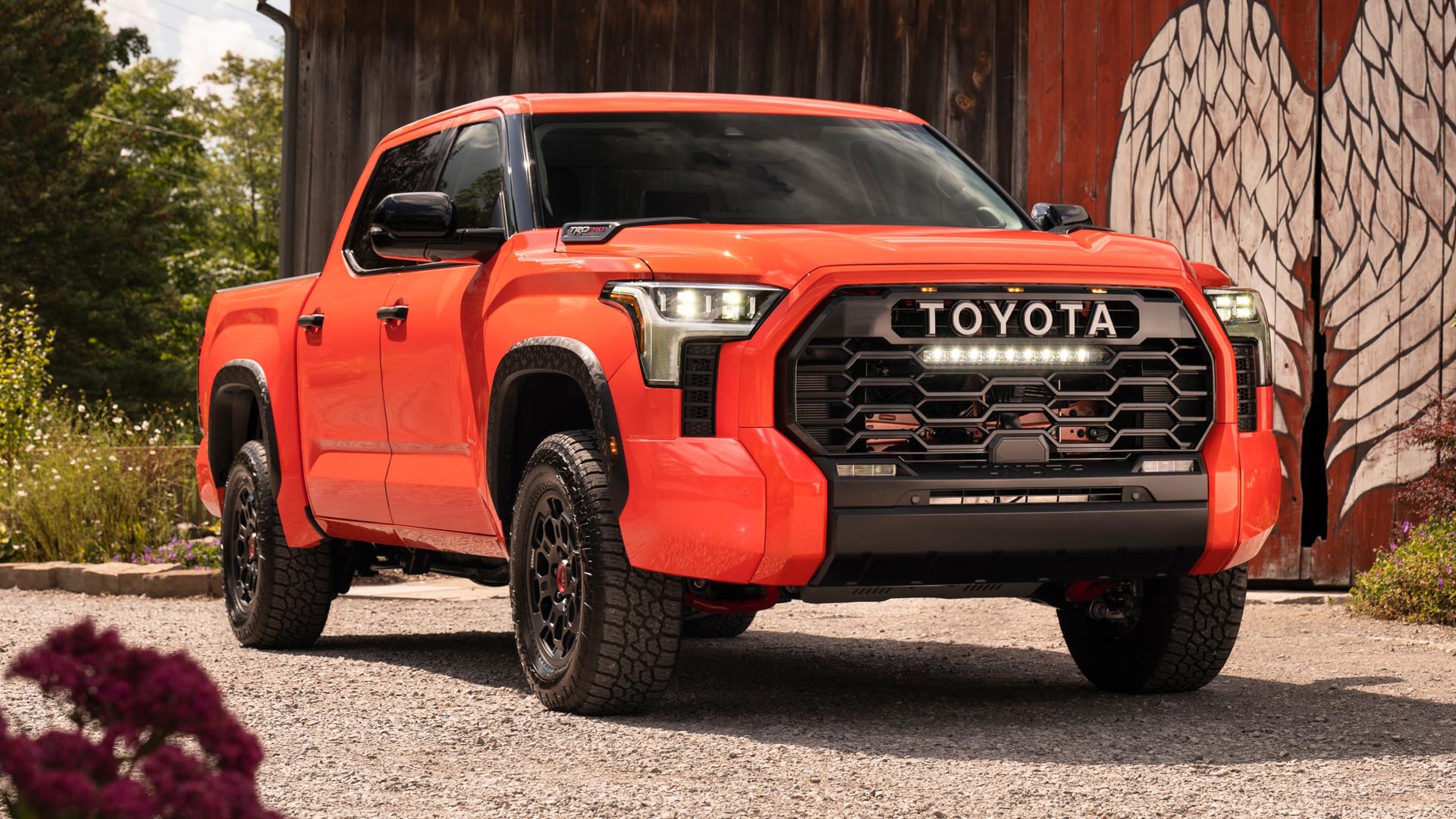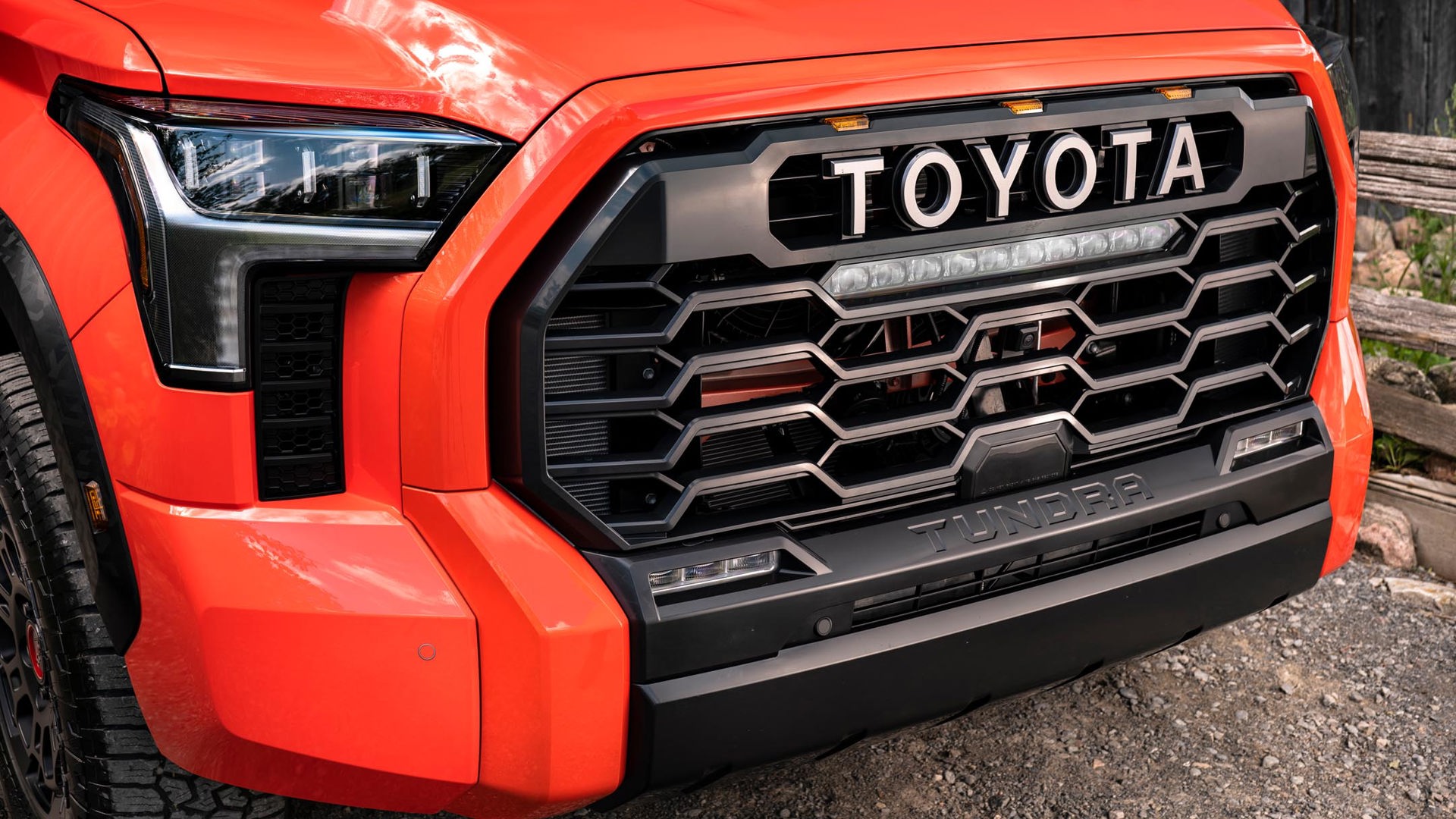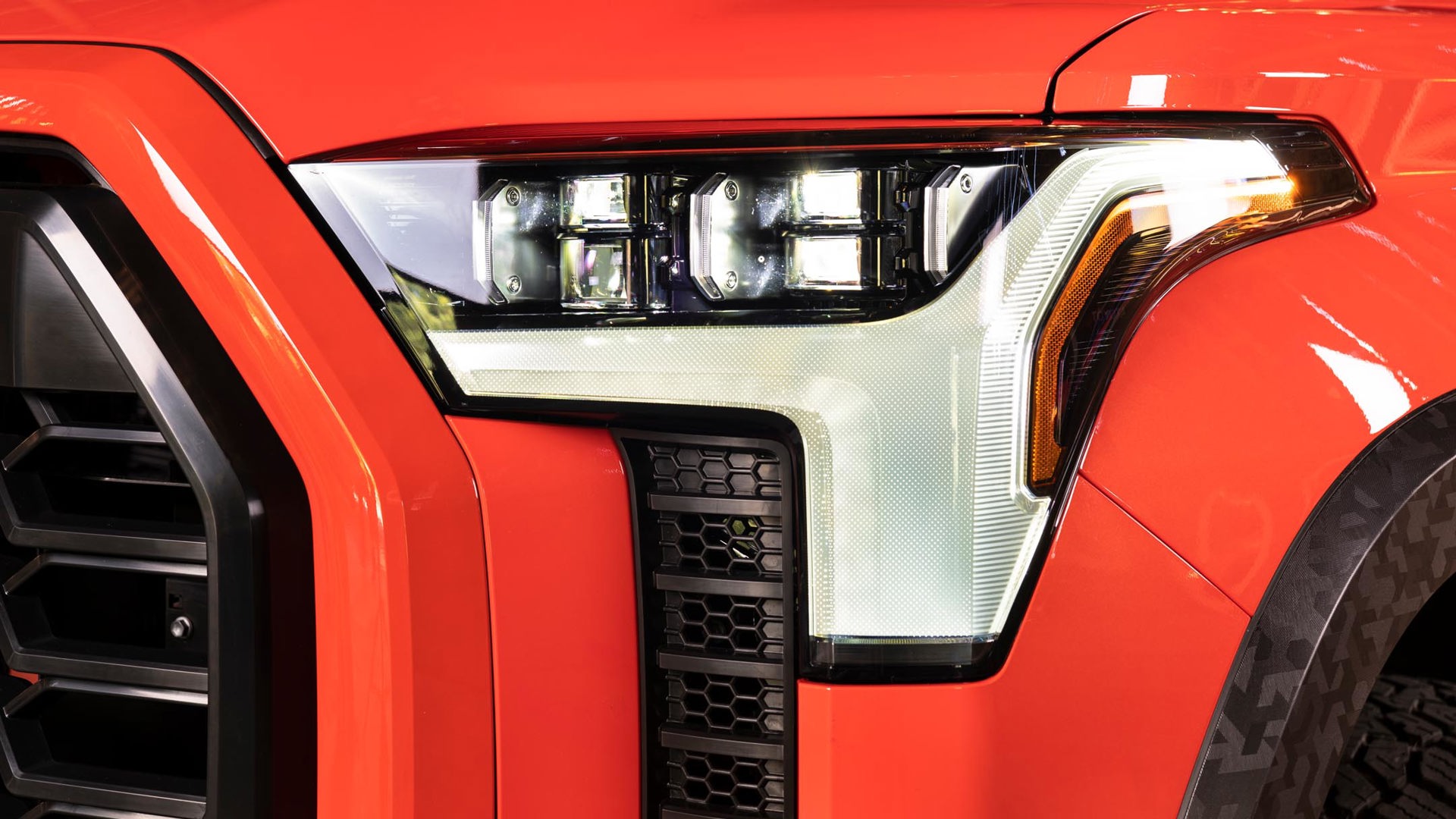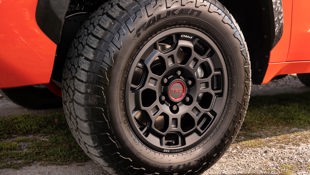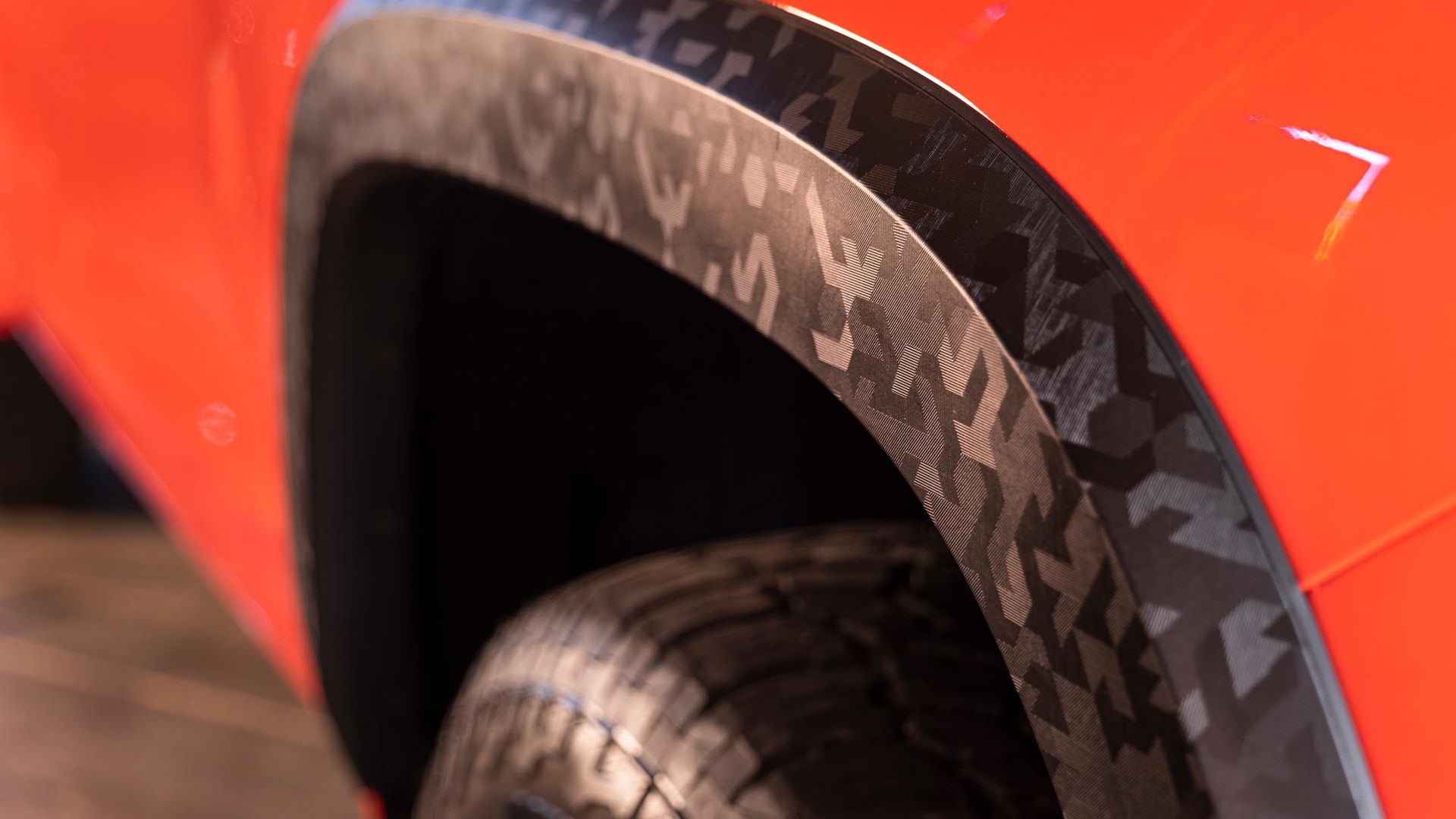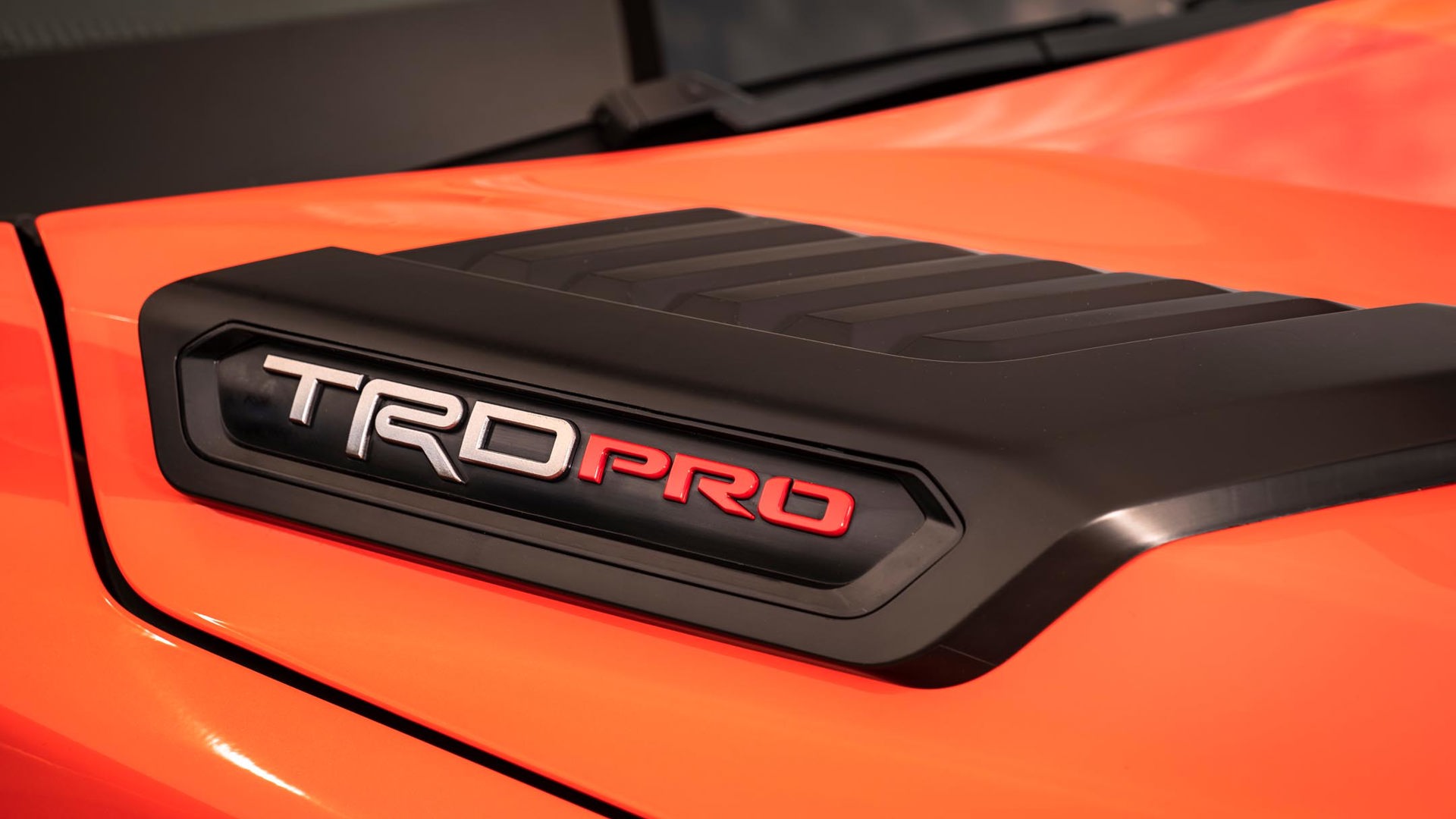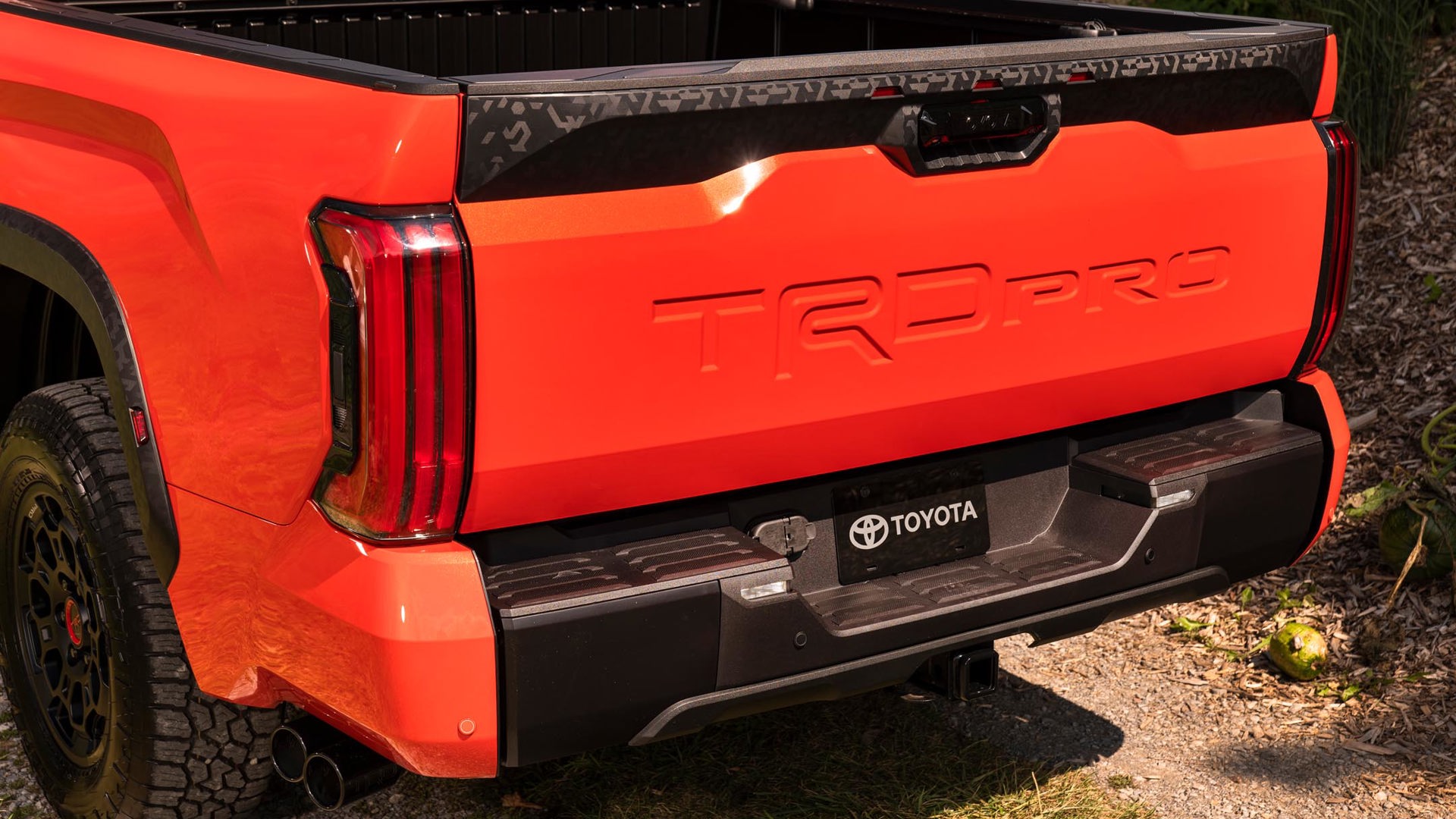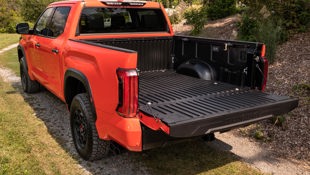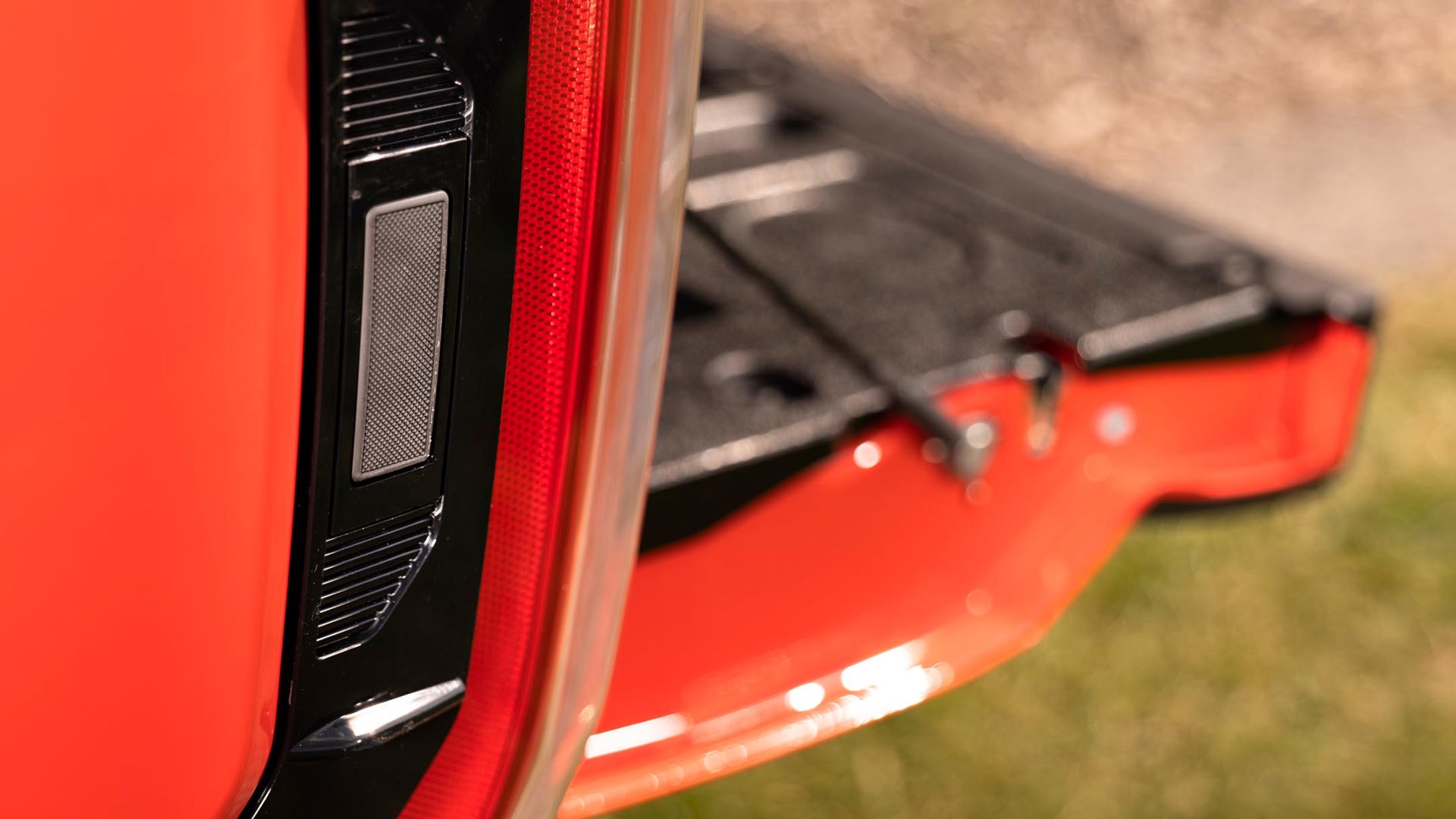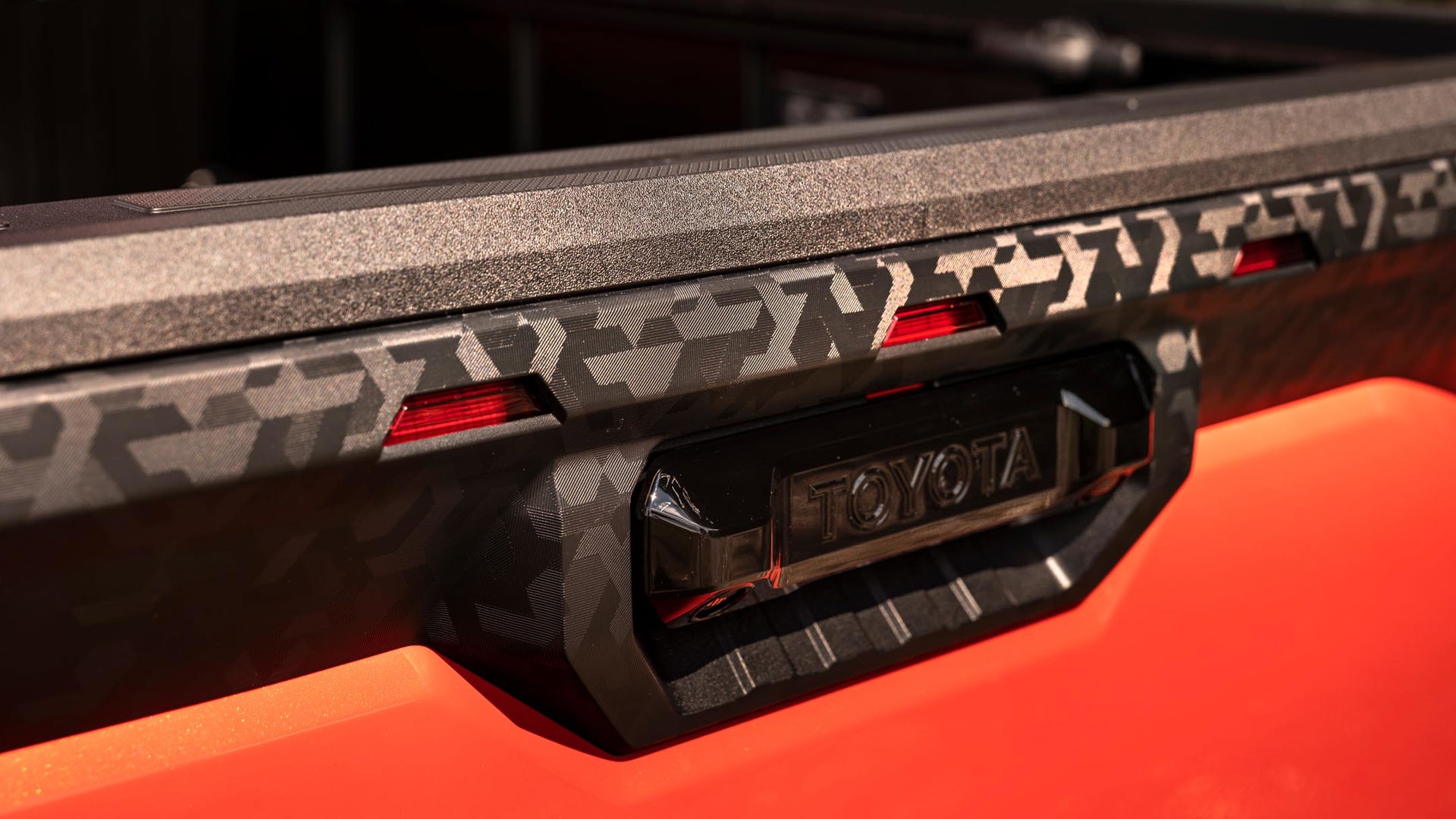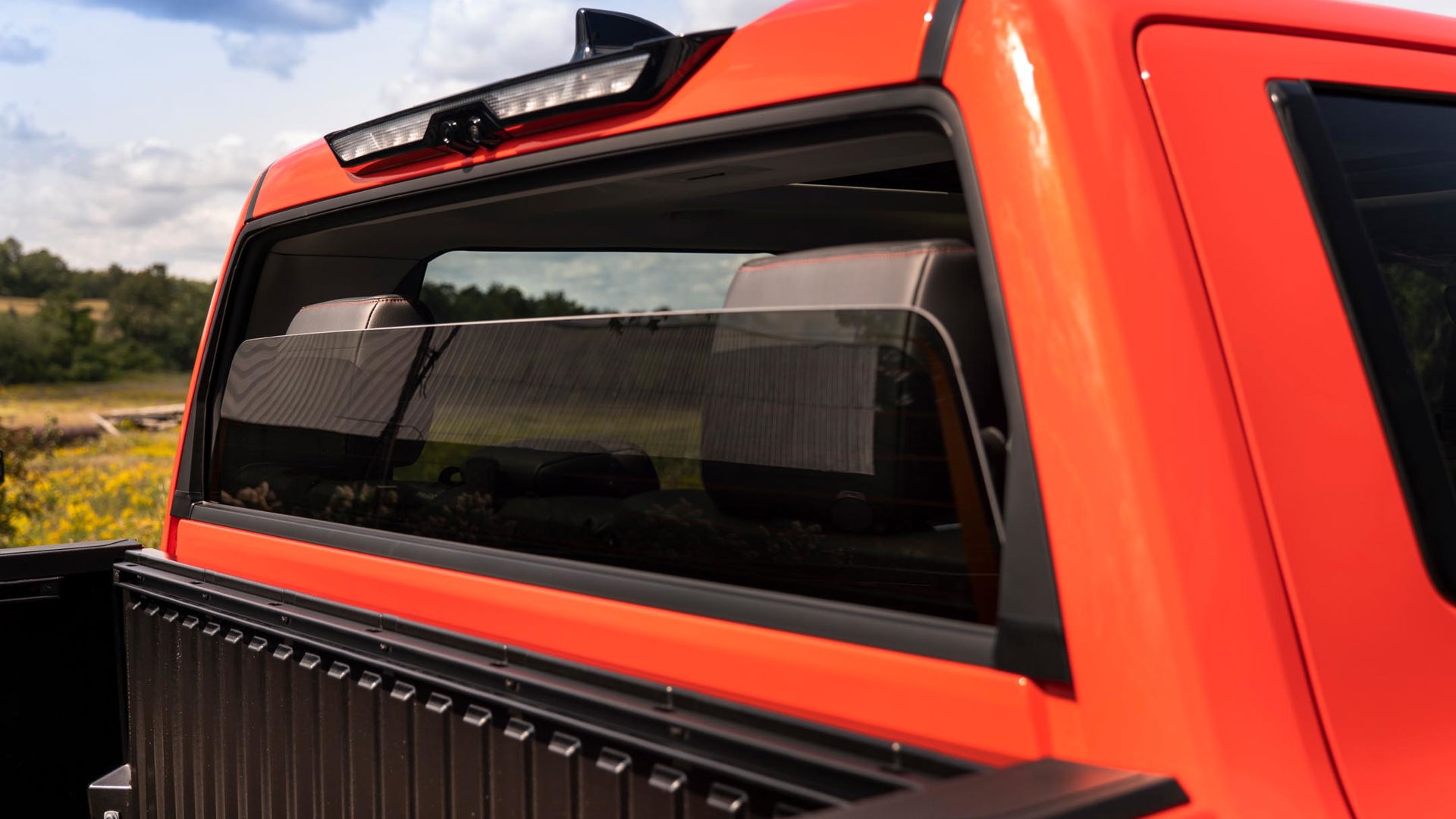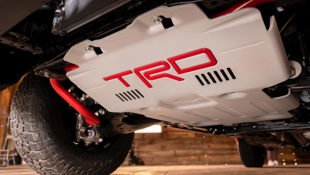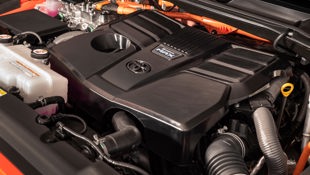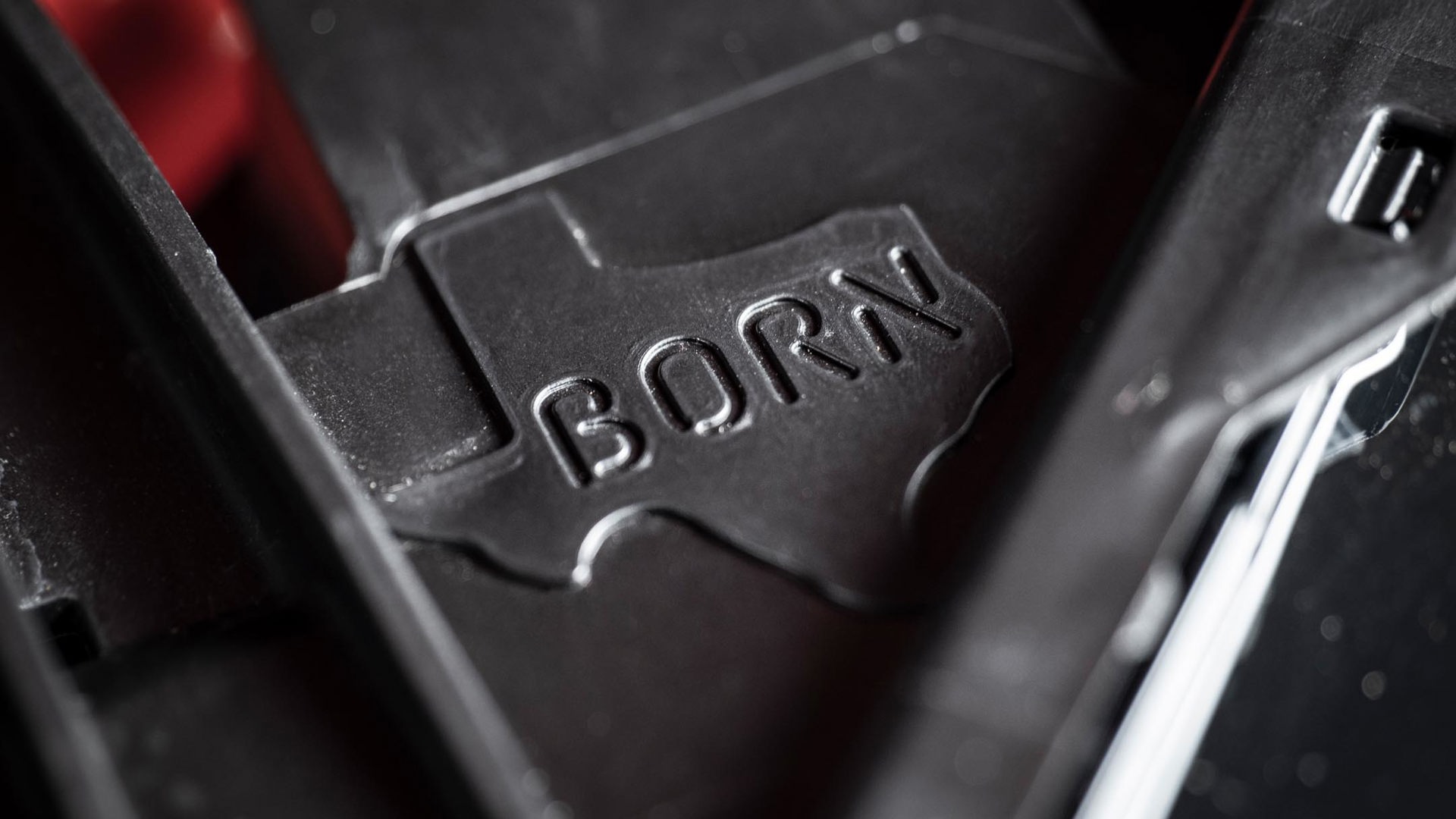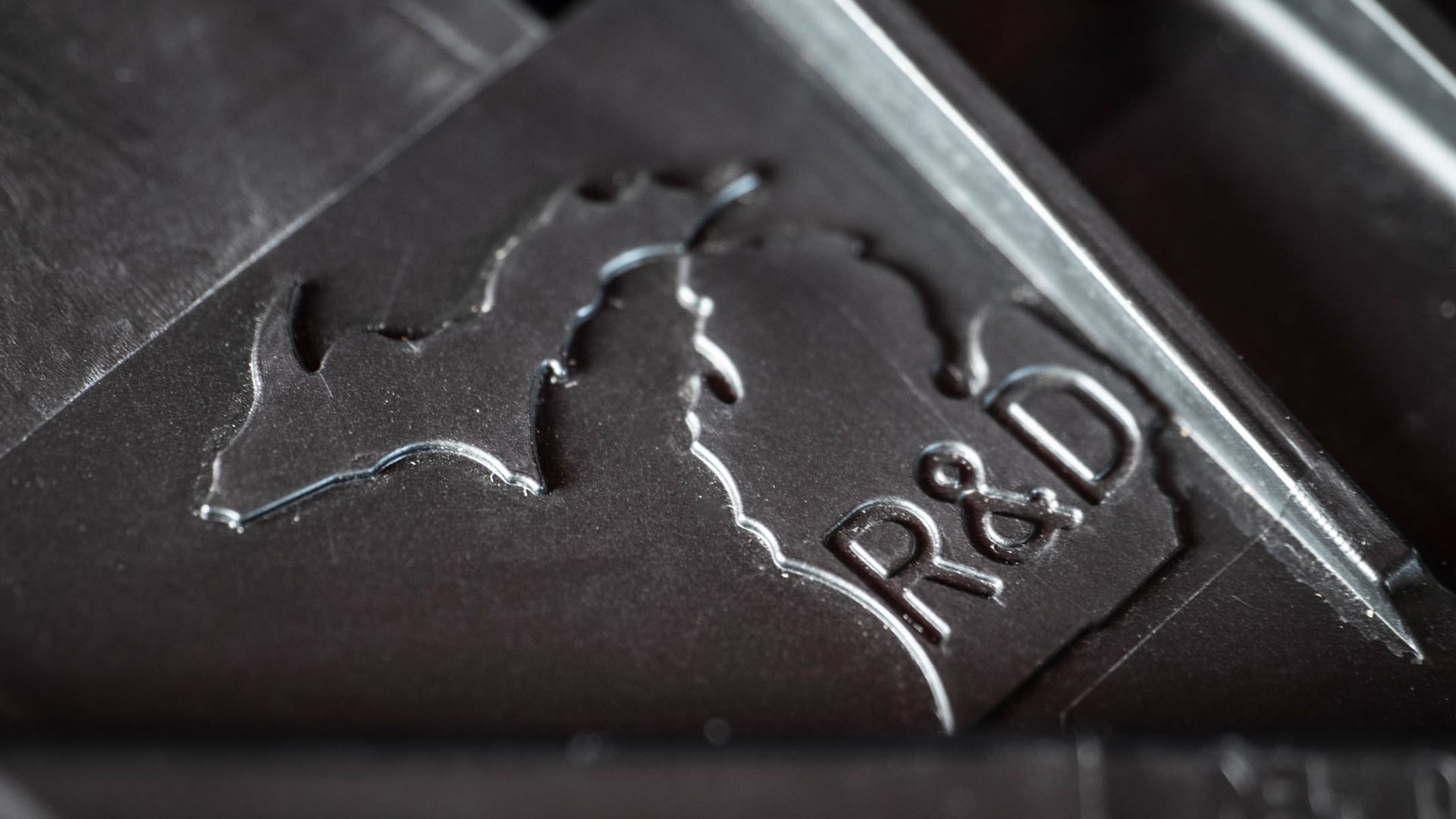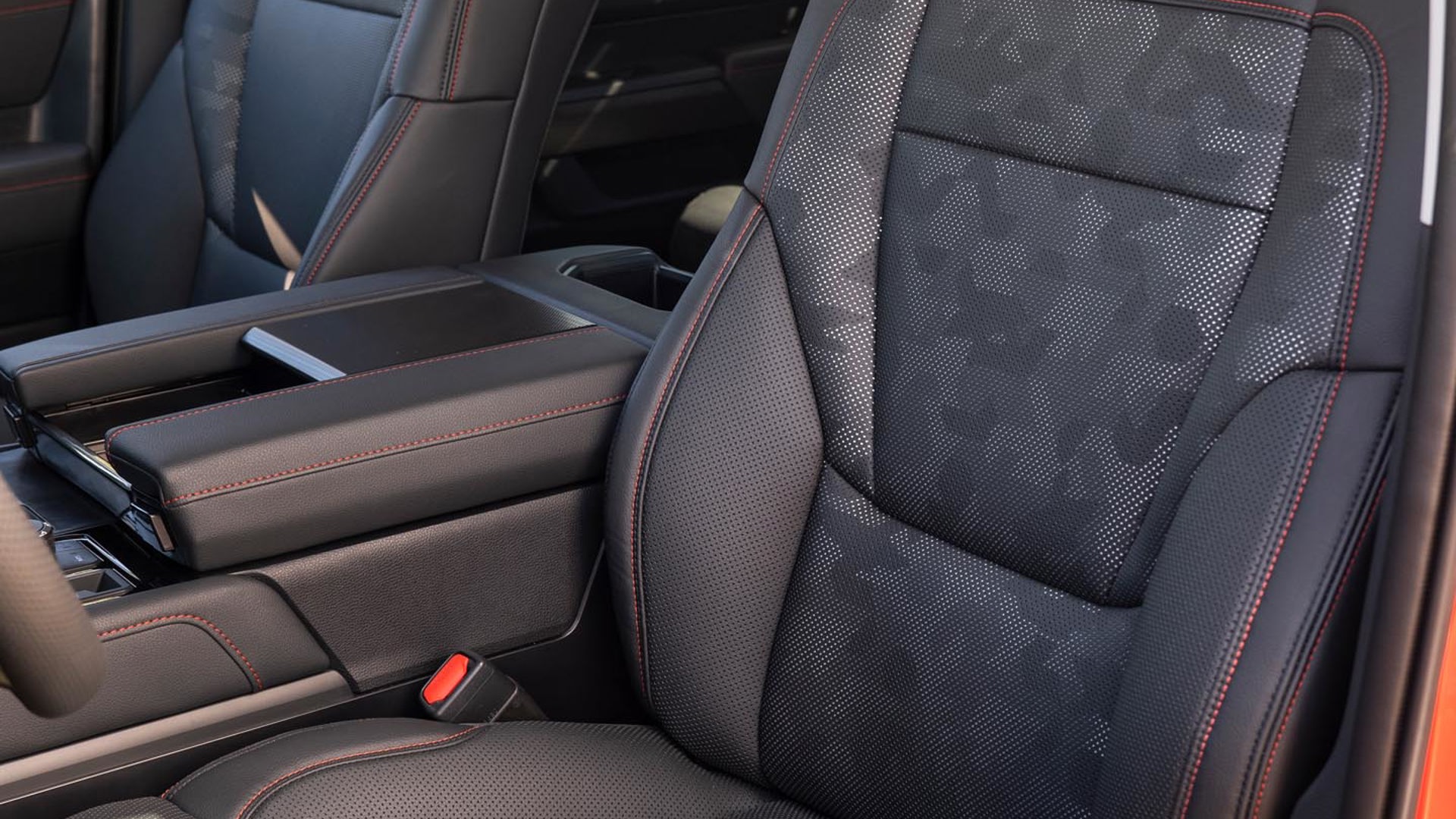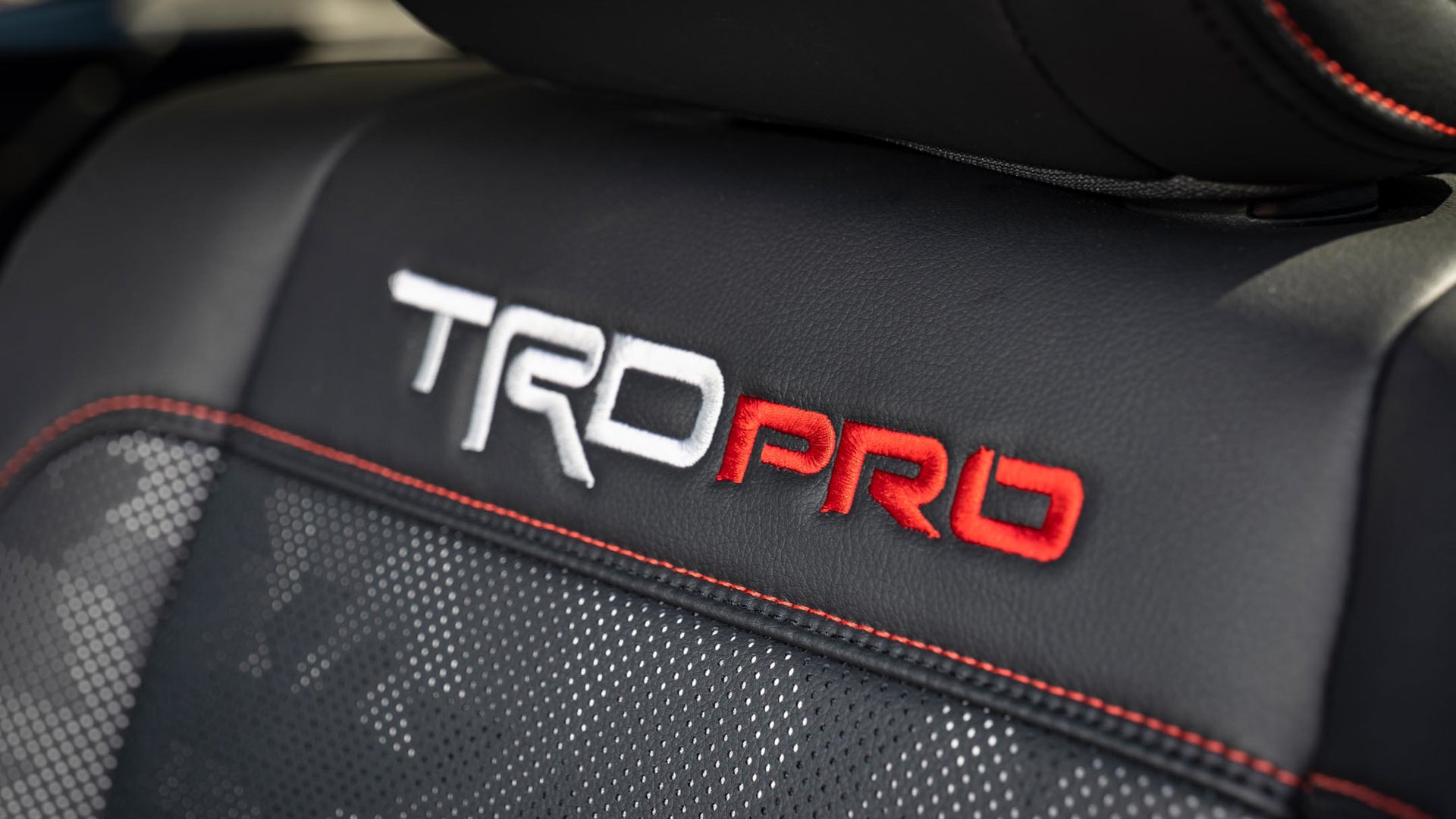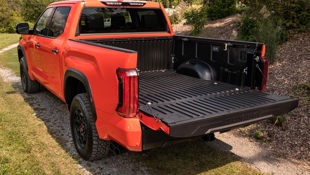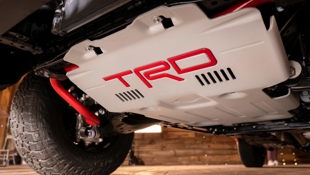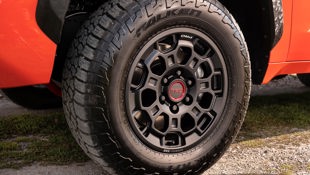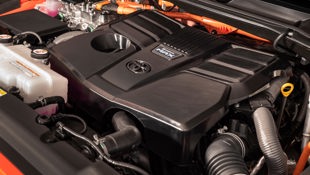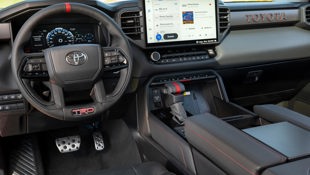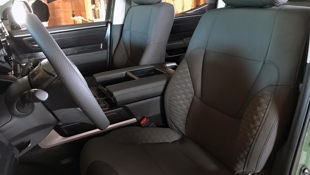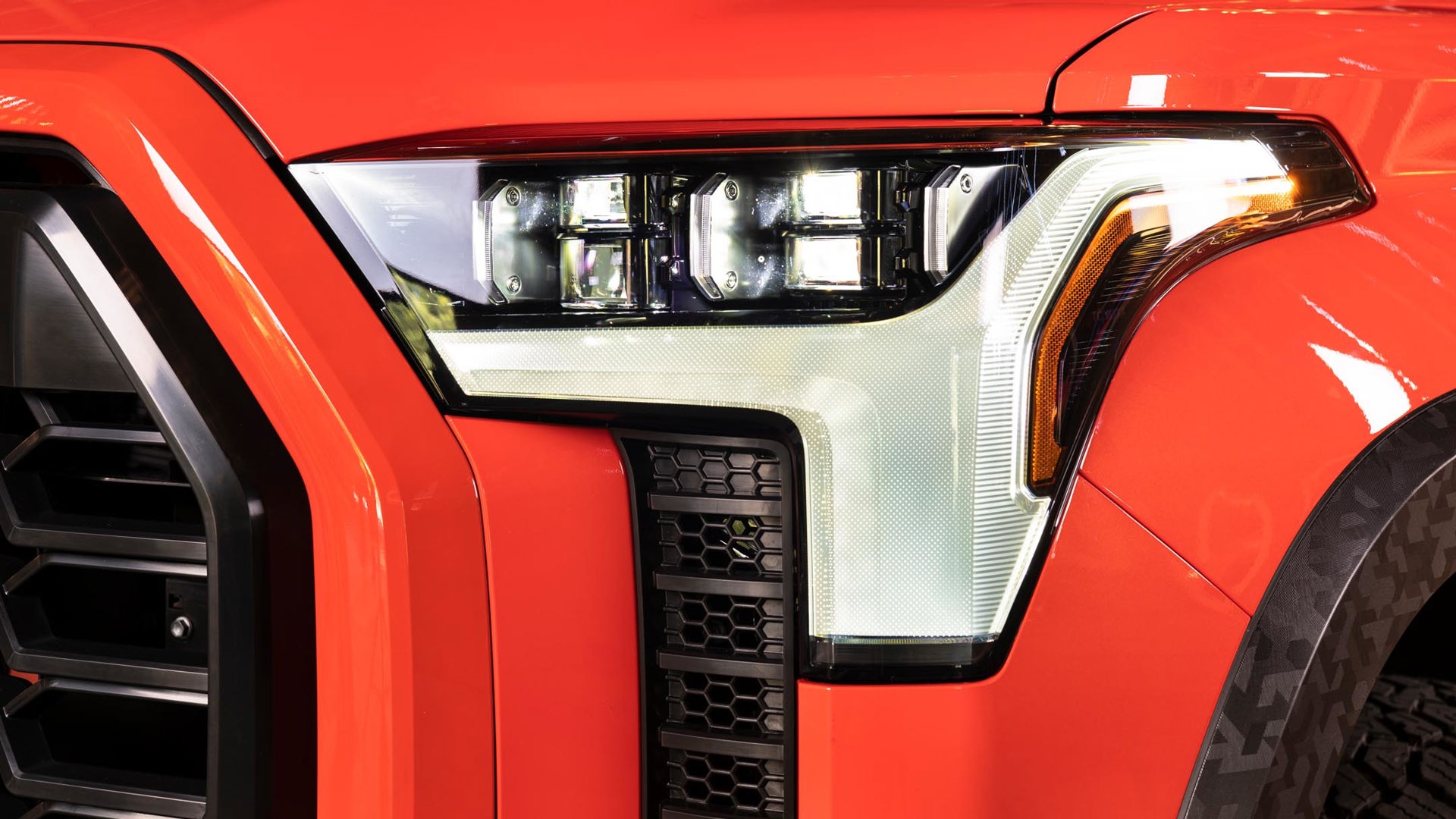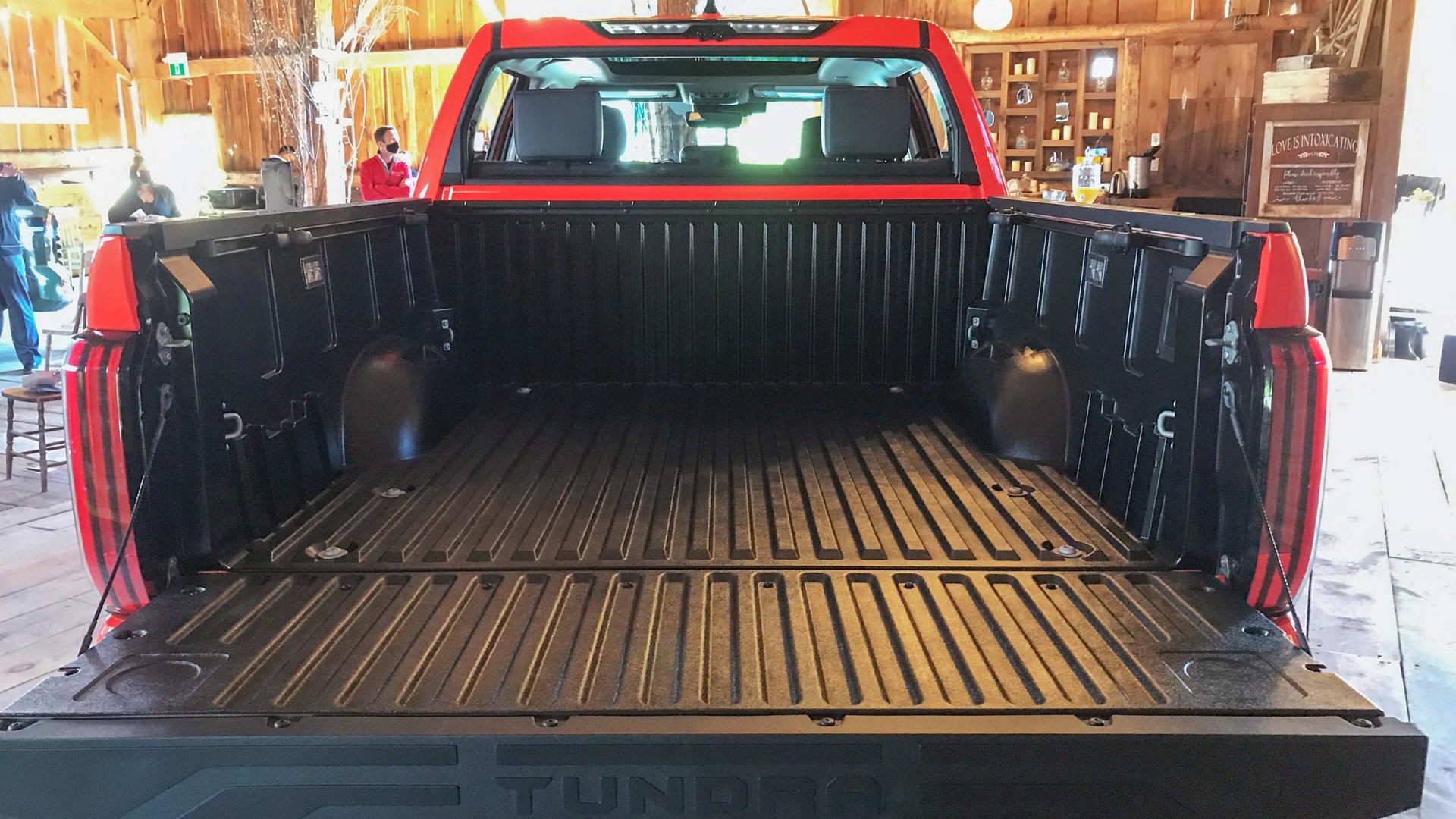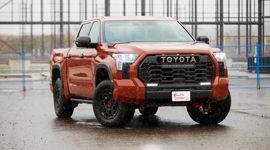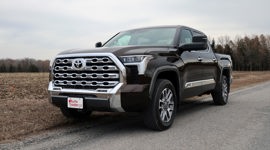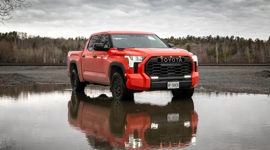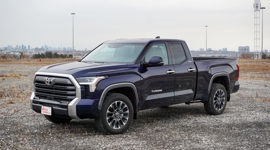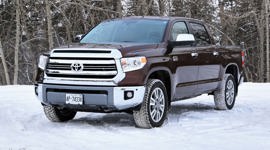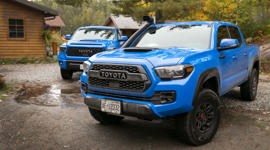Fourteen years is a long time in any life cycle, but when it comes to vehicles, it’s an eternity. That’s how long it’s been since Toyota has renewed its full-size Tundra pickup, which resides in a segment where one-upmanship numbers are announced almost daily. Before the official unveiling last night, we had a sneak peek at the new truck in the rather apt setting of a rural Ontario barn.
New Platform Underpins Fresh Design
All-new from the ground up, the third-generation 2022 Toyota Tundra has a blocky, angry bulldog design with an enormous, blacked-out grille flanked by geometric, modern LED headlights and projectors on upper trims. Integrated bumpers give it a finished, street-truck look. Underneath the sheet metal, the previous C-frame gives way to a new fully boxed architecture that Chief Engineer Mike Sweers reveals is a combination Tundra, Land Cruiser, and a yet-to-be-named vehicle platform that strikes a balance between tow/haul capability and off-road prowess.
Boxed ladder frames are strong, but aren’t known for their sophisticated on-road manners – they can be rather harsh and rudimentary. To improve its ride quality, the Tundra’s old rear leaf springs have been replaced with a multi-link coil spring setup with the option of adding adaptive air suspension. The rear-only air suspension has normal, high, and low modes to help with cargo loading and trailer hookup and levelling. Up front is a standard double-wishbone suspension setup, with standard twin-tube shocks. The TRD Off-Road package comes with Bilstein shocks, TRD-specific wheels, skid plates, rear locking differential, selective terrain modes, and crawl control. The standalone TRD Pro trim, meanwhile, gets additional 2.5-inch Fox shocks with piggyback reservoirs at all four corners, a bigger stabilizer bar, aluminum skid plating, and a 1.1-inch lift.
V8 Replaced by V6 with Better Torque, Smooth Power Delivery
But the big news is what lies under the hood. Most truck buyers are all about numbers, and for most of them, that means a big, thumping V8. Like Ford before it, Toyota has made the controversial move of doing away with the V8 option entirely in favour of a lighter, more efficient twin-turbo V6. It’s the end of a 22-year run that started back in 2000 when Toyota introduced the 4.7-litre, its first-ever pickup truck V8. Asked about the powertrain change, Sweers – whose team is comprised of avid truck owners – claims they’re “not interested in playing the numbers war” and focused on delivering the most power, and flattest torque curve as efficiently as possible. All Tundras now come with a 3.5L twin-turbo V6 with dual intakes and water-cooled intercoolers paired to a 10-speed automatic transmission. The all-new V6 produces more torque than the V8 it replaces, delivering 389 hp and 479 lb-ft of torque.
Even more interesting is that Toyota has equipped its upper trims, including the halo TRD Pro model with a new hybrid powertrain. Dubbed the I-Force Max, it uses the same powertrain as the other Tundras, but sandwiches an electric motor generator between the twin-turbo V6 and 10-speed transmission. The hybrid produces 437 hp, but more importantly, 583 lb-ft at only 2,400 rpm. Six years in development, the hybrid emulates a diesel-like torque curve thanks to the immediate power delivery from the electric unit before the turbos spool up.
Though a diesel option was considered, Speers claims it was ruled out due to stiff regulations and extra expense. Fuel consumption numbers are not yet available, but Sweers explained that though the new hybrid powertrain is naturally more efficient than the outgoing V8, the objective was to deliver a flatter torque curve and more readily available power over fuel economy and lower emissions. However, the truck’s platform was designed to accommodate a variety of powertrains, and while Speers wouldn’t comment on any future developments, it’s conceivable that Toyota’s legacy as a hybrid pioneer suggests there’s a strong possibility of EV or PHEV variants to come.
Weight Savings and Improved Towing
Although the Tundra now features an aluminum hood, fenders, and doors to shave extra weight, Toyota's research indicated that most truck users wanted a more rugged construction where it counted most: the bed. Instead of using expensive aluminum or weight-adding, efficiency-reducing heavy steel, the new bed is constructed using a lightweight resin sheet moulded compound (SMC) with reinforced aluminum cross-members. It’s dent-resistant, corrosion-free, and inexpensive to repair. The tailgate, too, has been redesigned to be stronger and lighter by 20 per cent and now features a new “elbow wave” release thanks to a switch sensor located in the left taillight.
Max tow rating is now 12,000 lb, and payload increases by 11 per cent to 1,940 lb. There are two different tow settings: Tow or Tow/Haul Plus for loads over 5,000 lb. Depending on which setting used, throttle response, brake regeneration, and steering effort are recalibrated, with brake regain increased on steep grades. A single touch of the brake will tell the transmission to hold that speed downhill.
All the Modern Technology That Drivers Expect
The cabin also gets a dramatic update in comfort and technology with standard eight-inch infotainment or optional 14-inch display that can store up to three driver profiles and five Bluetooth devices. The touch display now offers pinch-to-zoom capability, voice recognition, Apple CarPlay and Android Auto. An optional 12.3-inch customizable digital display cluster is available on upper trims. The chunky round knobs give way to more refined toggle switches but, fortunately, there’s still a volume knob instead of scrolling endlessly through the infotainment screen.
There are premium materials throughout, an optional panoramic sunroof, and a power sliding rear window. Also available are a heated steering wheel, and heated and ventilated seating.
Like most Toyotas, the Tundra offers the company’s suite of safety technology as standard, dubbed Safety Sense 2.5, which includes adaptive cruise control, pre-collision braking with pedestrian detection, lane-departure warning with steering assist, rear cross-traffic alert, automatic high-beams, blind-spot monitoring, rear seat reminder, and road sign assist.
Pricing and Configurations
The 2022 Toyota Tundra is available in SR, SR5, Platinum, 1794, and TRD Pro trims, in Double Cab with 6.5- or eight-foot bed, or Crew Max Cab with 5.5- or 6.5-foot bed. Upper trim levels come with the hybrid powertrain, and all are equipped with the 10-speed transmission.
There’s no word on price yet – we’ll know more when we drive it next month – but expect pricing and fuel economy figures closer to the 2022 Toyota Tundra’s arrival in dealerships later this year.
